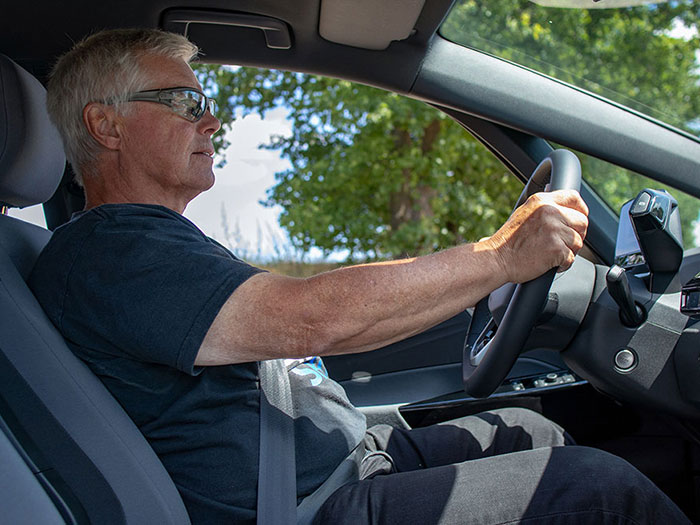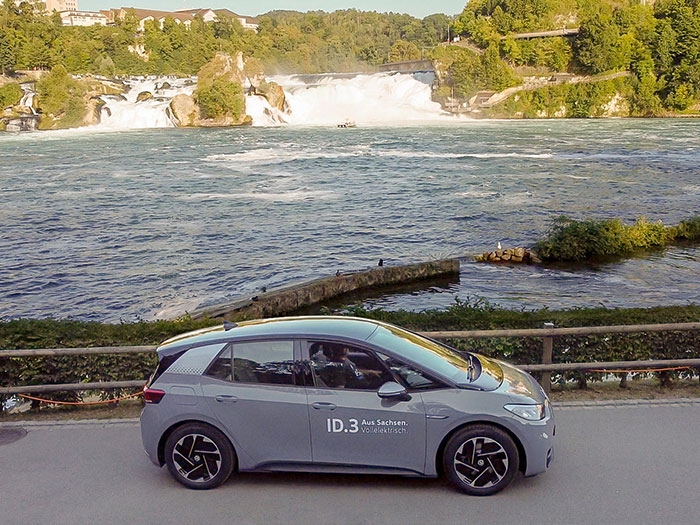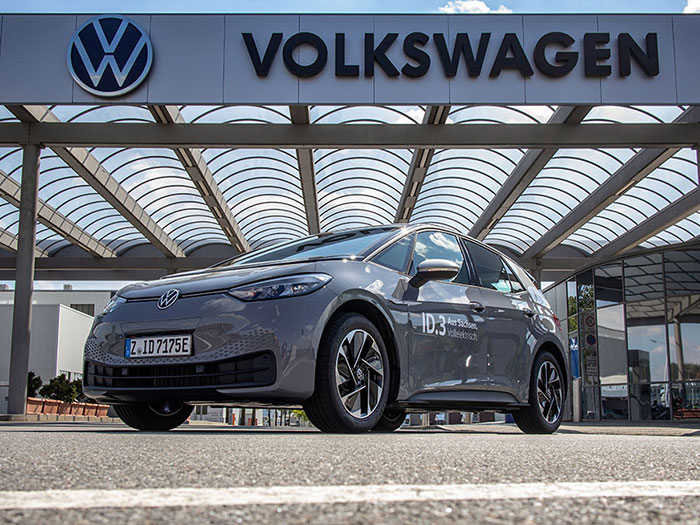531 km on a single charge: the Volkswagen ID.3’s record
Volkswagen Group’s first electric car based on the MEB platform showed off all its efficiency by completing a 531-kilometer journey without once recharging the battery. This is how the “hypermiler” who achieved the record succeeded in the feat.
How many kilometers can the Volkswagen ID.3 travel on a single charge? That’s what Felix Egolf wanted to find out. Egolf is a “hypermiler”, a car tester specialized in achieving the lowest possible consumption and maximizing efficiency for the highest possible range. He picked the new ID.3 up at the Zwickau plant and drove it to Schaffhausen (Switzerland).
Officially, the model used in the test drive – an ID.3 1st Pro Performance with 204 PS and a medium-size 58 kWh battery pack – has a range of up to 420 kilometers (WLTP), but Egolf covered 531, an increase of 26 percent, without once recharging. So, what’s the secret behind such a feat? The answer lies in his driving style: he repeatedly takes his foot off the accelerator pedal as often as possible, letting the car roll. This saves fuel – or in this case electricity.
250 kg extra

Egolf is not new to records and for his latest challenge he chose the Volkswagen ID.3. After picking the car up directly from Volkswagen’s plant in Saxony, he packed it with two suitcases plus a complete set of photo and film equipment including a drone. He also welcomed on board a passenger – the cameraman filming the record attempt.
That meant Egolf had to contend with a weight of 250 kilograms more than the ID.3’s standardized range rate of 420 kilometers is based on. He began his journey at dawn with great determination: a mix of concentration and a forward-looking focus to avoid braking wherever possible to keep the car constantly moving.
Driving secrets

“The optimum for this type of driving would be to cover a third of the total distance without engine power,” explains the hypermiler, who has a particularly striking approach to roundabouts: shortly before arriving at one, he sets the automatic selector switch from “D” to “N”. The car practically flies towards its intended target, and the excess speed is gently reduced by means of recuperation – the recovery of energy by the engine braking. The ID.3 independently recognises roundabouts and speed signs and slows down on its own.
The navigation, daytime running lights, radio and ventilation were either temporarily or permanently in operation. 44% of the journey was on highways and 56% on country roads. The first half of the route consisted mainly of highway kilometers, with the ID.3 constantly occupying the right lane and gliding along – while maintaining a safe distance – in the slipstream of trucks.
Energy management

The A9 highway has an up-and-down topography, with Egolf taking the hills slowly so as not to waste too much energy. The lost energy has been partly recovered by the recuperation system when going downhill.
Within breathing distance of the destination, but with only 2% of the battery remaining for more than 10 kilometers, Egolf maintained his calm and pulled off the feat, completing the journey from Zwickau to Schaffhausen in around nine hours.
Power consumption was a mere 10.9 kWh/100 km at an average speed of 56 km/h. The standardized consumption rating of the ID.3 is 15.4-14.5 kWh/100 km.
Zwickau: the electric pioneer
The Zwickau factory, where the ID.3 is built, is the first in Europe to be entirely converted to e-mobility, with an overall investment of some €1.2 billion. In 2021, the first full production year as an EV factory, around 300,000 electric vehicles based on the MEB platform will leave the Zwickau plant, making it the largest and most efficient EV factory in Europe.
Source: Volkswagen AG
